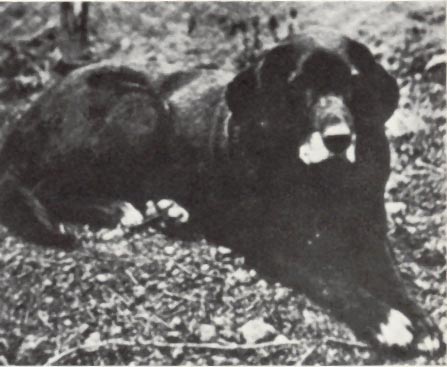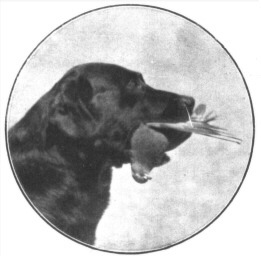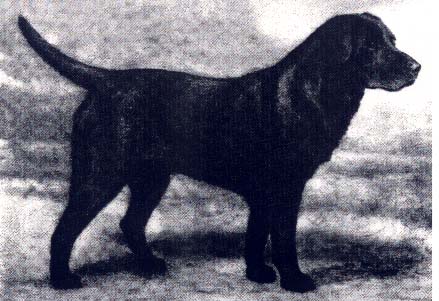
The Labrador Retriever, despite his name, did not come from Labrador, but from Newfoundland. The area was populated with small water dogs, who, when bred with Newfoundlands, produced a breed referred to as the St. John's Water Dog, a prototype for the Lab of today. Early in the 19th century, the Earl of Malmesbury reputedly saw one of the dogs of this type and had it imported; in 1830, the noted British sportsman Colonel Hawker referred to the Lab as "the best for any kind of shooting...generally black and no bigger than a Pointer, very fine in legs, with short, smooth hair...is extremely quick running, swimming, and fighting...and their sense of smell is hardly to be credited."

Initially, the dogs were not known as Labradors until the Duke of Malmesbury admitted that he "always called his Labrador dogs." However, the breed eventually died out in Newfoundland due to a heavy dog tax and quarantine law. Many Labs were interbred with other types of retrievers, but luckily, the breed prevailed and fanciers drew up a definitive standard. Accurate pedigrees of today's Labs go back as far as 1878. The Lab was recognized as a distinct breed by the English Kennel Club in 1903. The first registration of Labradors by the AKC was in 1917, and from the 1920s through the '30s, there was a great influx of British dogs that formed the backbone of the breed in this country.



 The Labrador Retriever, despite his name, did not come from Labrador, but from Newfoundland. The area was populated with small water dogs, who, when bred with Newfoundlands, produced a breed referred to as the St. John's Water Dog, a prototype for the Lab of today. Early in the 19th century, the Earl of Malmesbury reputedly saw one of the dogs of this type and had it imported; in 1830, the noted British sportsman Colonel Hawker referred to the Lab as "the best for any kind of shooting...generally black and no bigger than a Pointer, very fine in legs, with short, smooth hair...is extremely quick running, swimming, and fighting...and their sense of smell is hardly to be credited."
The Labrador Retriever, despite his name, did not come from Labrador, but from Newfoundland. The area was populated with small water dogs, who, when bred with Newfoundlands, produced a breed referred to as the St. John's Water Dog, a prototype for the Lab of today. Early in the 19th century, the Earl of Malmesbury reputedly saw one of the dogs of this type and had it imported; in 1830, the noted British sportsman Colonel Hawker referred to the Lab as "the best for any kind of shooting...generally black and no bigger than a Pointer, very fine in legs, with short, smooth hair...is extremely quick running, swimming, and fighting...and their sense of smell is hardly to be credited."
 Initially, the dogs were not known as Labradors until the Duke of Malmesbury admitted that he "always called his Labrador dogs." However, the breed eventually died out in Newfoundland due to a heavy dog tax and quarantine law. Many Labs were interbred with other types of retrievers, but luckily, the breed prevailed and fanciers drew up a definitive standard. Accurate pedigrees of today's Labs go back as far as 1878. The Lab was recognized as a distinct breed by the English Kennel Club in 1903. The first registration of Labradors by the AKC was in 1917, and from the 1920s through the '30s, there was a great influx of British dogs that formed the backbone of the breed in this country.
Initially, the dogs were not known as Labradors until the Duke of Malmesbury admitted that he "always called his Labrador dogs." However, the breed eventually died out in Newfoundland due to a heavy dog tax and quarantine law. Many Labs were interbred with other types of retrievers, but luckily, the breed prevailed and fanciers drew up a definitive standard. Accurate pedigrees of today's Labs go back as far as 1878. The Lab was recognized as a distinct breed by the English Kennel Club in 1903. The first registration of Labradors by the AKC was in 1917, and from the 1920s through the '30s, there was a great influx of British dogs that formed the backbone of the breed in this country.


